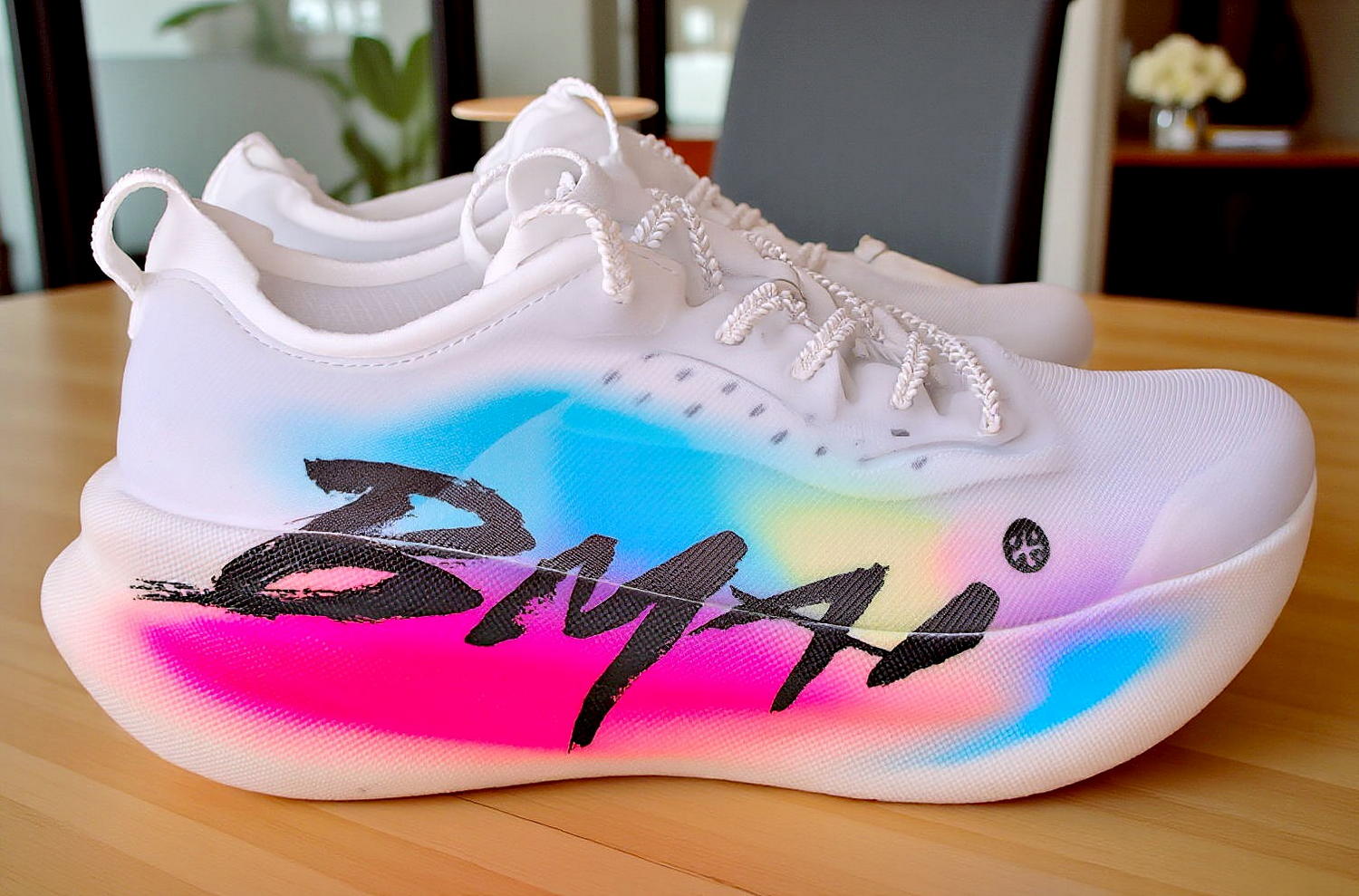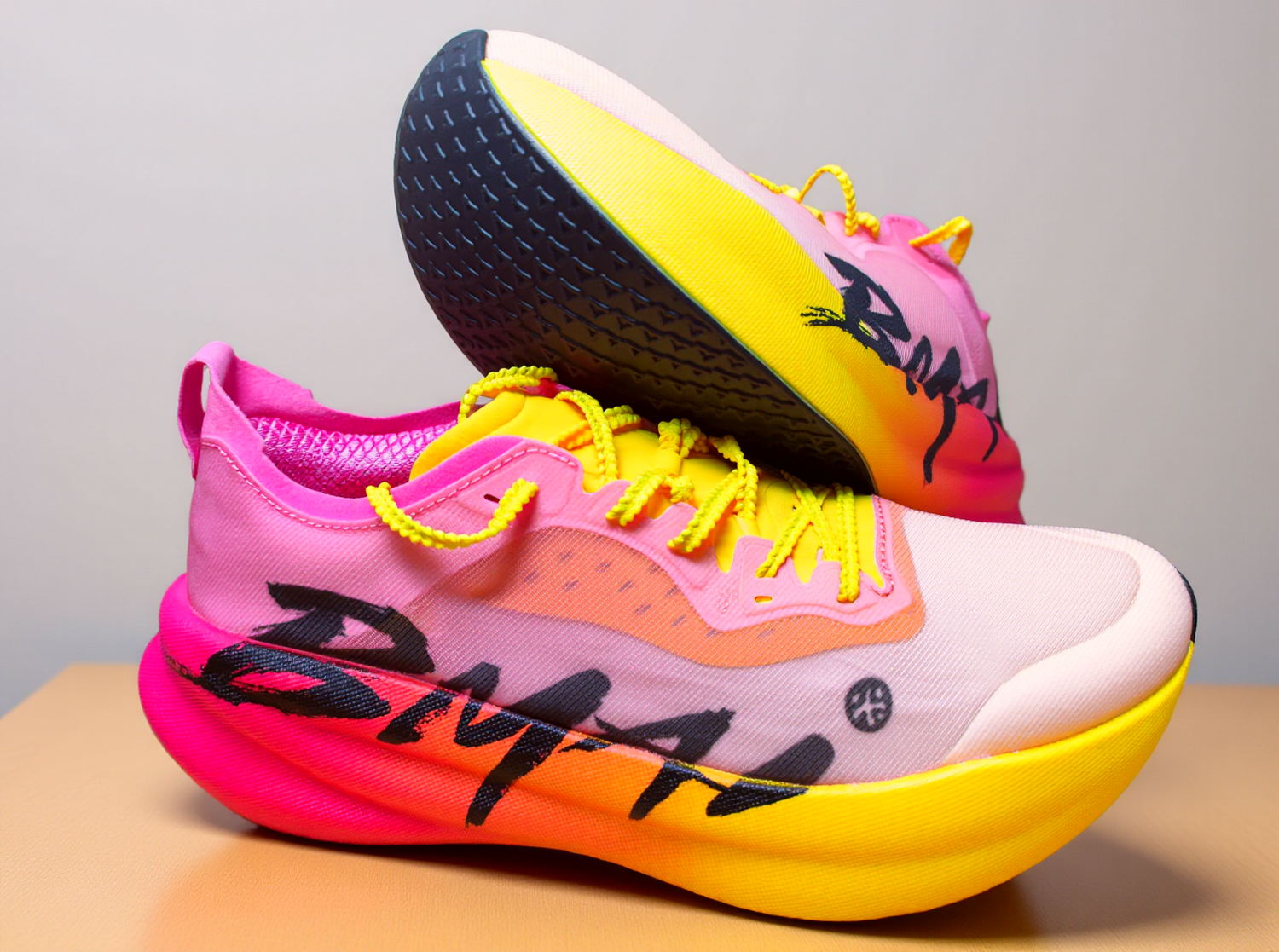The Ultimate Guide to BMAI’s Carbon Plate Running Shoes: Turbo 3, Fly, and Mix 2 Unveiled

Running shoe technology has evolved dramatically in recent years, with carbon plate designs leading the charge in performance and innovation. Among the brands making waves in this space is BMAI, a company celebrated for its pragmatic approach to running footwear. In 2025, BMAI continues to impress with its carefully curated lineup of carbon plate running shoes: the Jingtan 3 Turbo, Jingtan Fly, and Jingtan Mix 2. These three models, affectionately dubbed the “Three Musketeers” of BMAI’s carbon plate family, cater to a wide range of marathon runners, from elite speedsters to casual long-distance enthusiasts.
This article dives deep into BMAI’s carbon plate matrix, exploring the design philosophy, technical specifications, and real-world performance of each shoe. Whether you’re chasing a sub-3-hour marathon or simply aiming to finish your first 42km (26 miles), this comprehensive guide will help you understand why BMAI stands out in the competitive running shoe market.
🌟 BMAI’s Carbon Plate Philosophy: A Balanced Approach
BMAI has earned a reputation as a brand that prioritizes function over flash. Unlike some competitors that flood the market with endless variations, BMAI keeps its carbon plate lineup lean, focusing on just three distinct models. This strategic decision ensures each shoe has a clear purpose, avoiding overlap and making it easy for runners to choose the right pair for their needs.
Why Three Models?
The decision to limit the lineup to three shoes—Jingtan 3 Turbo, Jingtan Fly, and Jingtan Mix 2—reflects BMAI’s thoughtful approach to product development. Too few options might leave gaps in coverage, while too many could dilute focus and confuse consumers. BMAI strikes a balance by targeting three key runner profiles:
- Elite runners aiming for times under 3 hours (Jingtan 3 Turbo).
- Intermediate runners targeting sub-4:30 marathons (Jingtan Fly).
- Everyday runners finishing within 6 hours (Jingtan Mix 2).
This segmentation ensures that each shoe serves a specific audience without redundancy, a testament to BMAI’s runner-centric design ethos.
Long Update Cycles
Unlike brands that churn out new iterations annually, BMAI adopts a slower, more deliberate update cycle—typically refreshing its models every two years. The original Jingtan debuted in 2021, making BMAI one of the early adopters of carbon plate technology in the domestic market. Fast forward to 2025, and the Jingtan 3 Turbo represents the latest evolution, while competitors have already reached their fifth generations. This slower pace prioritizes quality over quantity, ensuring each update brings meaningful improvements rather than incremental hype.
Affordable Pricing
In a market where premium running shoes often carry hefty price tags, BMAI remains committed to accessibility. Its shoes are priced approximately 200 RMB (about $28 USD) below comparable competitors, a strategy that has fueled runaway success—like the Jingtan Fly’s 300,000+ pairs sold in 2024. Even with the 2025 releases, BMAI maintains this competitive pricing, making high-performance carbon plate shoes attainable for a broader audience.
🏃 Jingtan Mix 2: The Tank-Like Long-Distance Companion
The Jingtan Mix 2 is BMAI’s offering for the “everyman” marathoner—runners who prioritize comfort and durability over blistering speed. Often described as a “tank” due to its robust rear design, this shoe is built for long-distance training and slower-paced marathons. Let’s break down what makes it unique.
Design and Purpose
The Jingtan Mix 2 targets runners who can complete a marathon but don’t chase aggressive time goals—think 5- to 8-minute-per-kilometer paces (8- to 13-minute-per-mile). It’s also ideal for those training for their first marathon or focusing on long, steady runs. The inclusion of a carbon plate in a “slow running” shoe might seem counterintuitive, but it enhances running economy, allowing runners to maintain speed or duration with less effort.
Technical Breakdown
The Jingtan Mix 2’s design can be split into two distinct halves: a dynamic front and a fortified rear.
Front Half: Familiar Territory
- Midsole Material: The front half features BMAI’s Boomfly supercritical foam, shared with the Jingtan Fly. This lightweight, responsive foam provides a smooth, rolling sensation underfoot.
- Carbon Plate: A forked, shovel-shaped carbon plate in the forefoot aids propulsion, mimicking the Jingtan Fly’s energetic toe-off.
Rear Half: Built Like a Tank
- Drop: A 9mm drop (higher than the Fly’s 7mm and Turbo’s 4.5mm) caters to heel-strikers, offering a natural transition.
- Midsole Thickness: The rear midsole stands at 36mm, matching the Jingtan Fly but with a 4mm increase over its predecessor, the Mix Plus. This boosts cushioning capacity.
- Stability Enhancements: Wider heel and midfoot sections, paired with a high-positioned guidance slot, minimize deformation. Hardened heel counters and external TPU clips add rock-solid stability.
- Outsole: Thicker polyurethane rubber with deeper lugs enhances durability, especially at the heel.
The Mix 2’s rear design prioritizes stability and cushioning over lightweight agility, making it a haven for runners who land on their heels.
Weight and Trade-Offs
Weighing approximately 270g (9.5 oz) in a size 41 (US 8), the Mix 2 is noticeably heavier than the Fly (210g / 7.4 oz) and Turbo (170g / 6 oz). This heft reflects its focus on cushioning, stability, and durability rather than speed. For runners pacing slower than 5 minutes per kilometer (8 minutes per mile), shedding ounces offers little practical benefit, so BMAI leans into comfort instead.
Real-World Performance
Testing the Mix 2 at a steady 5-minute-per-kilometer (8-minute-per-mile) pace reveals a dependable, no-frills experience. The high heel cushioning absorbs impact effectively, while the smooth transition from heel to toe suits relaxed long runs. However, pushing the pace exposes its limitations—its weight and conservative responsiveness cap its versatility.
Aesthetics
Visually, the Mix 2 lags behind its siblings. The BMAI logo is small and confined to the upper, lacking the bold, integrated branding of the Fly and Turbo. Its color schemes feel subdued, with minimal graffiti accents, though darker variants with circular logos offer a more cohesive look.
Who’s It For?
The Jingtan Mix 2 shines for:
- Runners finishing marathons in 4+ hours.
- Heel-strikers needing stability.
- Larger runners seeking durability and cushioning.
- Budget-conscious athletes wanting a versatile training shoe.
At its price point, it’s a high-value option for long-distance warriors who don’t prioritize speed.
🚀 Jingtan Fly: The People’s Champion
The Jingtan Fly is BMAI’s runaway hit, blending elite-level performance with unbeatable value. Selling over 300,000 pairs in 2024, it’s a staple for marathoners of all levels, from sub-3-hour elites to casual 5-hour finishers.
Design and Purpose
Positioned as the “mid-tier” carbon plate shoe, the Fly targets runners aiming for sub-4:30 marathons. Its versatility makes it a go-to for both racing and training, earning it a spot as a top value pick in 2024.
Technical Breakdown
- Weight: 210g (7.4 oz) in size 41 (US 8), striking a balance between lightness and substance.
- Midsole: Boomfly supercritical foam delivers a smooth, flowing ride with ample cushioning (29mm forefoot, 36mm heel).
- Carbon Plate: A forked design optimizes propulsion without overwhelming stiffness.
- Drop: 7mm, accommodating a range of running styles.
- Outsole: Durable rubber with moderate thickness ensures longevity without excess weight.
Performance Highlights
The Fly excels in comfort and fluidity. Its midsole strikes a sweet spot—responsive enough for speedwork, cushioned enough for long runs. The carbon plate enhances efficiency without feeling overly aggressive, making it a joy to run in. At a 3:30 marathon pace or a relaxed 5:00/km (8:00/mile), it adapts effortlessly.
Drawbacks
- Upper Durability: The lightweight jacquard upper starts tight but stretches with mileage, potentially compromising fit over time.
- Stability: Narrow midsole geometry and minimal support structures may not suit runners with overpronation or stability needs.
Why It Wins
Priced significantly below competitors, the Fly delivers near-top-tier performance. It’s smooth, comfortable, and budget-friendly—a rare trifecta that landed it on many “best of” lists in 2024. With BMAI’s two-year cycle, it’ll remain a contender through 2025.
Who’s It For?
- Intermediate runners targeting 3:30–4:30 marathons.
- Elites seeking a training shoe.
- Value-driven runners wanting premium features without the premium price.
⚡ Jingtan 3 Turbo: The Lightweight Speed Machine
The Jingtan 3 Turbo is BMAI’s flagship, designed for elite runners chasing sub-3-hour marathons. A refined version of the Jingtan 3, it swaps the original’s ATPU midsole for a snappier Peba foam, shaving weight and boosting responsiveness.
Design and Purpose
Weighing just 170g (6 oz) in size 41 (US 8), the Turbo is BMAI’s lightest offering, built for speed and agility. It’s not the thickest or stiffest top-tier shoe, but its balanced design appeals to nimble, high-cadence runners.
Technical Breakdown
- Midsole: Peba foam (upgraded from ATPU) offers quick, crisp rebound. At 29.5mm forefoot and 34mm heel, it’s thinner than some rivals’ 40mm stacks.
- Carbon Plate: A lightweight 12g plate prioritizes flexibility over rigidity.
- Drop: 4.5mm, the lowest in the lineup, enhancing ground feel for elite pacing.
- Upper: Integrated tongue and lacing system boosts comfort and fit.
- Outsole: Minimal rubber keeps weight down while maintaining grip.
Performance Insights
The Turbo’s Peba foam delivers a faster, more elastic response than the Jingtan 3’s ATPU, though hardness (42D) remains consistent. Its lightweight build and moderate carbon plate stiffness suit high-cadence runners, while powerful heel-strikers might find it less forceful. Adding a 4-5mm supercritical insole (borrowed from the Mix 2 or Fly) can boost cushioning to near-40mm, enhancing versatility.
Stability and Fit
The Turbo inherits the Jingtan 3’s midsole geometry, offering decent stability for neutral runners but lacking aggressive support features. Sizing runs large—stick to your usual size unless adding an insole, then consider sizing up.
Who’s It For?
- Elite runners targeting sub-3-hour marathons.
- Lightweight, cadence-driven athletes.
- Women or smaller runners seeking a responsive, agile shoe.
📊 Comparison Table: Jingtan 3 Turbo vs. Fly vs. Mix 2
| Feature | Jingtan 3 Turbo | Jingtan Fly | Jingtan Mix 2 |
|---|---|---|---|
| Weight | 170g (6 oz) | 210g (7.4 oz) | 270g (9.5 oz) |
| Midsole Material | Peba | Boomfly | Boomfly |
| Drop | 4.5mm | 7mm | 9mm |
| Stack Height | 29.5mm / 34mm | 29mm / 36mm | 27mm / 36mm |
| Target Pace | <3-hour marathon | 3:30–4:30 marathon | 5–8 min/km (8–13 min/mi) |
| Best For | Elite speed | Versatile performance | Long-distance comfort |
🌍 BMAI in the Broader Market
BMAI’s carbon plate lineup stands out for its clarity, affordability, and performance. While brands like Nike and Adidas push maximalist stacks and premium prices, BMAI offers a grounded alternative—shoes that deliver without breaking the bank. The Jingtan Fly’s sales success proves that runners value substance over hype, while the Turbo and Mix 2 round out a matrix that leaves no runner behind.
🎯 Conclusion: Which BMAI Shoe Is Right for You?
BMAI’s carbon plate trio caters to every marathoner:
- Jingtan 3 Turbo: Your pick for speed and sub-3-hour glory.
- Jingtan Fly: The all-rounder for performance and value.
- Jingtan Mix 2: The sturdy companion for long, steady miles.
With competitive pricing, thoughtful design, and a focus on runner needs, BMAI continues to carve its niche in 2025’s running shoe landscape. Lace up and find your perfect match!

